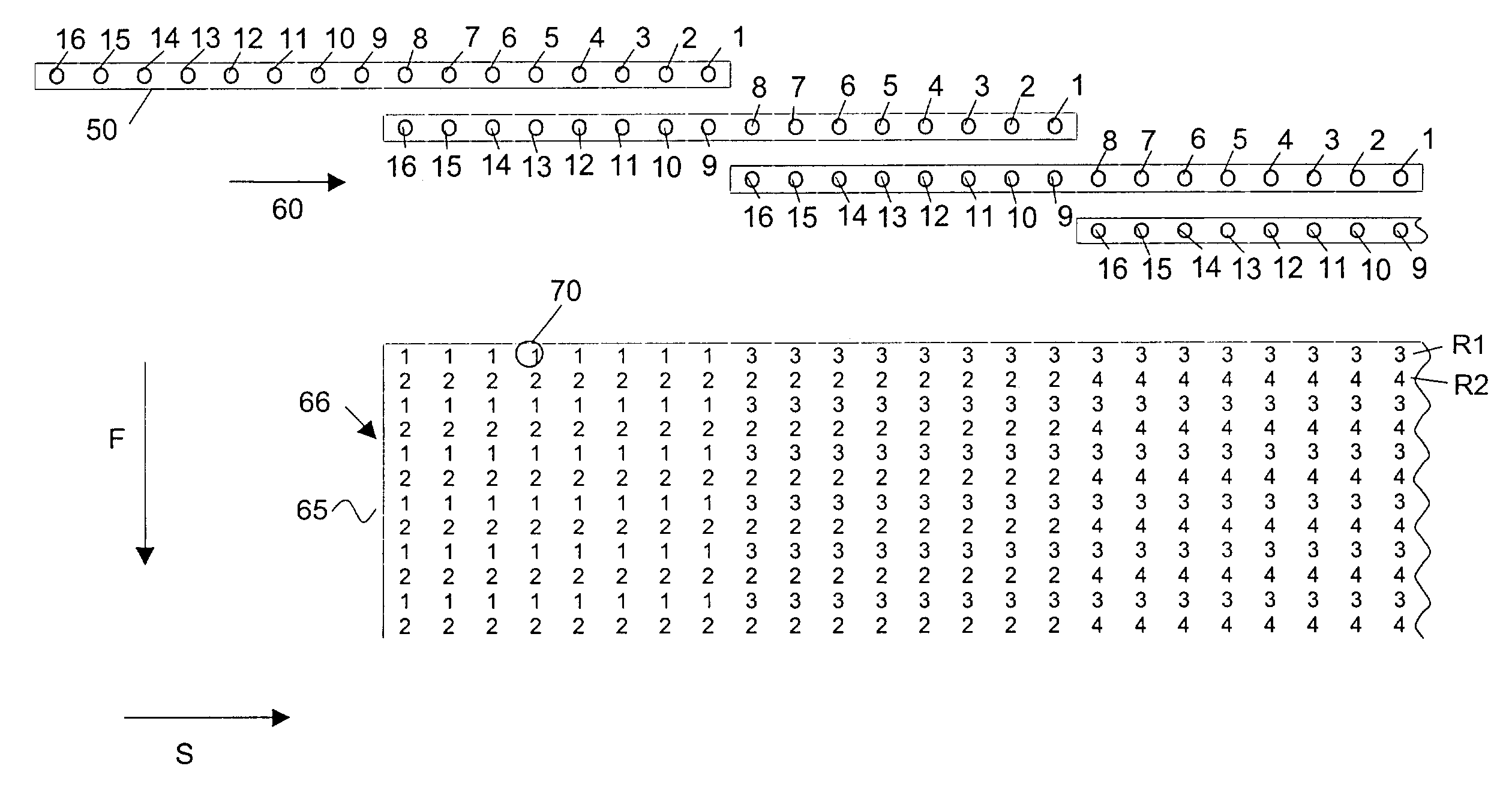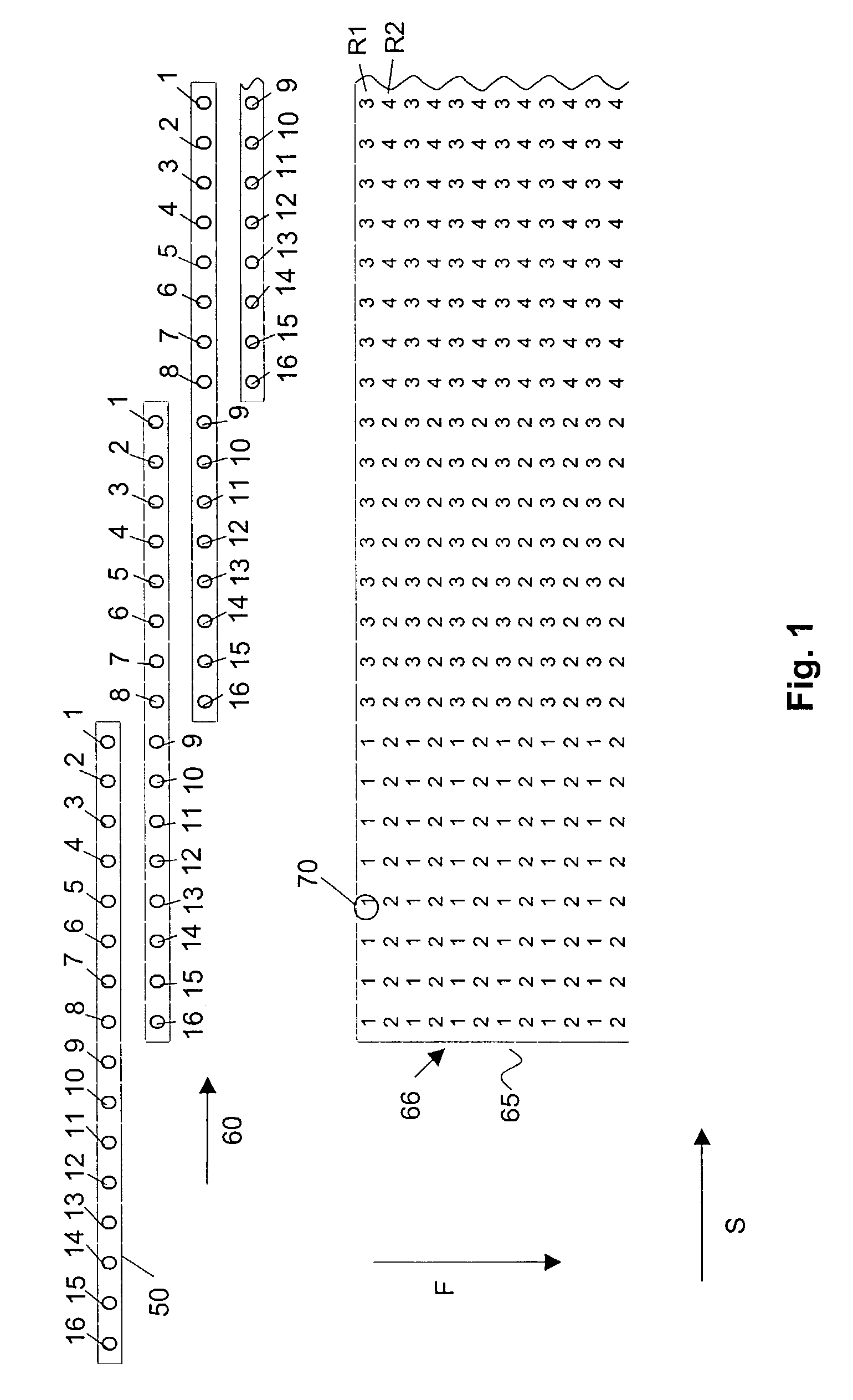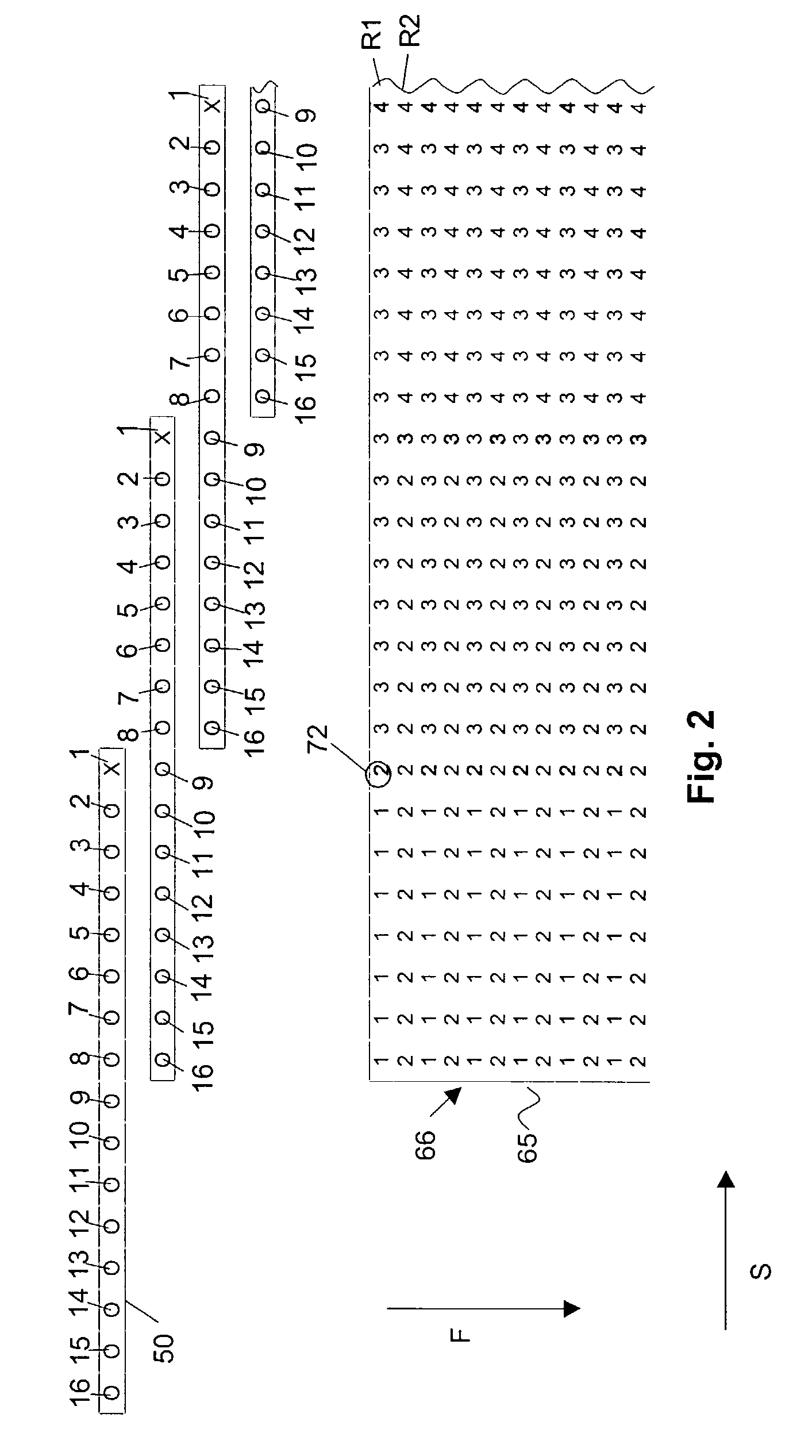Printing method and apparatus for back-up of defective marking elements
a marking element and printing method technology, applied in printing, other printing apparatus, etc., can solve the problems of printing showing defects that can run throughout printing, formation of artefacts, and constraints on the quality of the drives used
- Summary
- Abstract
- Description
- Claims
- Application Information
AI Technical Summary
Benefits of technology
Problems solved by technology
Method used
Image
Examples
first embodiment
[0054] illustrated in FIG. 4A, the print head 50 is reconfigured by making two marking elements inactive at a first side A of the print head 50. The number of marking elements made inactive when reconfiguring the print head 50 equals the number of redundant marking elements in a set, which is two for the example under consideration. In the present case, 14 marking elements 1′–14′ remain active. The same redundancy as before reconfiguration of the print head 50 is kept (i.e. 2), so the 14 marking elements 1′–14′ are now divided into groups of 7. Redundant pairs of marking elements now become (1′, 8′), (2′, 9′), (3′, 10′), (4′, 11′), (5′, 12′), (6′, 13′) and (7′, 14′). It can be seen that every pixel position can be reached by two different marking elements, which are different from the two equivalent marking elements which could reach that pixel position before reconfiguration of the print head 50. If one of the marking elements is defect, the corresponding equivalent marking element...
second embodiment
[0056] or reconfiguration of the print head 50, illustrated in FIG. 4B, the print head 50 is reconfigured by making two marking elements inactive at a second side B of the print head 50. The number of marking elements made inactive when reconfiguring the print head 50 equals the number of redundant marking elements in a set, which is two for the example under consideration. In the present case, 14 marking elements 1′–14′ remain active. The same redundancy as before reconfiguration of the print head 50 is kept (i.e. 2), so the 14 marking elements 1′–14′ are now divided into groups of 7. Redundant pairs of marking elements now become (1′, 8′), (2′, 9′), (3′, 10′), (4′, 11′), (5′, 12′), (6′, 13′) and (7′, 14′). It can be seen that every pixel position can be reached by two different marking elements, which are different from the two equivalent marking elements which could reach that pixel position before reconfiguration of the print head 50. If one of the marking elements is defect, th...
third embodiment
[0058] which is a special case that can only be carried out if the defect marking elements are at the beginning or end of each of the redundant groups of marking elements, the print head 50 is reconfigured by keeping the non-defect marking elements as active marking elements, and making the defective marking elements at the beginning or end of each of the redundant groups inactive. When reconfiguring the print head 50, the active marking elements 1′–14′ are divided into redundant groups, while keeping the same redundancy as before reconfiguration of the print head 50. For the example under consideration, this means that the 14 active marking elements 1′–14′ are now divided into two groups of 7 active marking elements. Every active marking element 1′–14′ again has a redundant marking element. Redundant pairs of marking elements now become (1′, 14′), (2′, 8′), (3′, 9′), (4′, 10′), (5′, 11′), (6′, 12′), (7′, 13′). Again every pixel position can be reached by two different marking eleme...
PUM
 Login to View More
Login to View More Abstract
Description
Claims
Application Information
 Login to View More
Login to View More - Generate Ideas
- Intellectual Property
- Life Sciences
- Materials
- Tech Scout
- Unparalleled Data Quality
- Higher Quality Content
- 60% Fewer Hallucinations
Browse by: Latest US Patents, China's latest patents, Technical Efficacy Thesaurus, Application Domain, Technology Topic, Popular Technical Reports.
© 2025 PatSnap. All rights reserved.Legal|Privacy policy|Modern Slavery Act Transparency Statement|Sitemap|About US| Contact US: help@patsnap.com



